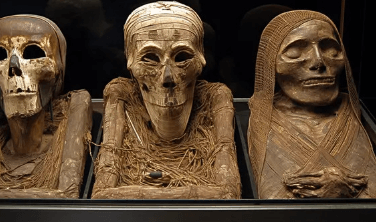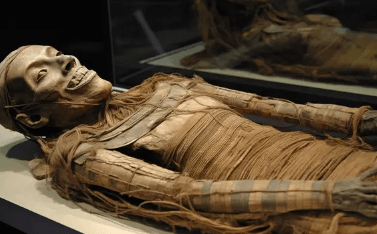Baby:-Zfa25tuel0= Mummies

The discovery of Baby:-Zfa25tuel0= Mummies, including those classified as Zfa25tuel0, raises intriguing questions about ancient cultural practices and the societal values surrounding life and death. The mummification of infants not only signifies a profound respect for their brief existence but also provides a window into the spiritual beliefs and emotional landscapes of past civilizations. What motivations underpinned this ritual, and how did it shape communal identities? Exploring these dimensions may uncover layers of complexity in human history that remain largely unexamined.
Historical Context of Baby:-Zfa25tuel0= Mummies
Baby:-Zfa25tuel0= Mummies, a practice most notably associated with ancient Egypt, has a rich historical context that spans thousands of years and multiple cultures.
Various ancient practices, including unique embalming techniques, were employed to preserve the deceased for the afterlife.
This ritual underscored a profound respect for life and death, reflecting diverse beliefs around mortality and the human experience, fostering a sense of continuity for future generations.
Read More Baby:755ofroani4= Dolphin
Reasons for Mummifying Infants
The practice of mummifying infants in ancient cultures, particularly in Egypt, reveals deep-seated beliefs about the afterlife and the spiritual significance of young lives.
Infant mummification served to protect the deceased children’s souls, ensuring their safe passage to the afterlife.
Additionally, it reflected societal values surrounding death, devotion, and the continuity of family lineage, illustrating the profound impact of ancient practices on community identity.

Archaeological Discoveries and Analysis
Archaeological discoveries related to mummified remains have significantly advanced our understanding of ancient practices and beliefs surrounding death.
The analysis of mummy preservation techniques, particularly concerning infant mummies, reveals the intricate methods employed by ancient cultures to honor and protect their deceased.
These findings contribute to our comprehension of societal values and the emotional significance attributed to the loss of young lives in historical contexts.
Cultural Significance and Beliefs
Exploring the cultural significance of Baby:-Zfa25tuel0= Mummies reveals the profound beliefs ancient societies held regarding death and the afterlife.
Mummification served as a critical aspect of cultural rituals, reflecting spiritual beliefs about immortality and the preservation of one’s essence.
These practices not only honored the deceased but also provided the living with a framework for understanding existence, ultimately fostering a deeper connection to their heritage and identities.
Read More Drawing:-X-Vgtxjku0= Easy:Sntboprbahm= Turtle
Conclusion
In summation, the study of mummies like Baby:-Zfa25tuel0= Mummies intriguing insights into ancient attitudes towards mortality. Mummification practices reveal a profound passion for preserving precious lives, underscoring the significance of familial ties and spiritual beliefs. This delicate dance with death demonstrates a culture’s dedication to safeguarding the souls of their youngest members, providing a poignant perspective on their enduring legacies and heartfelt hopes for the afterlife. Such findings foster a deeper understanding of humanity’s historical journey through grief and reverence.




